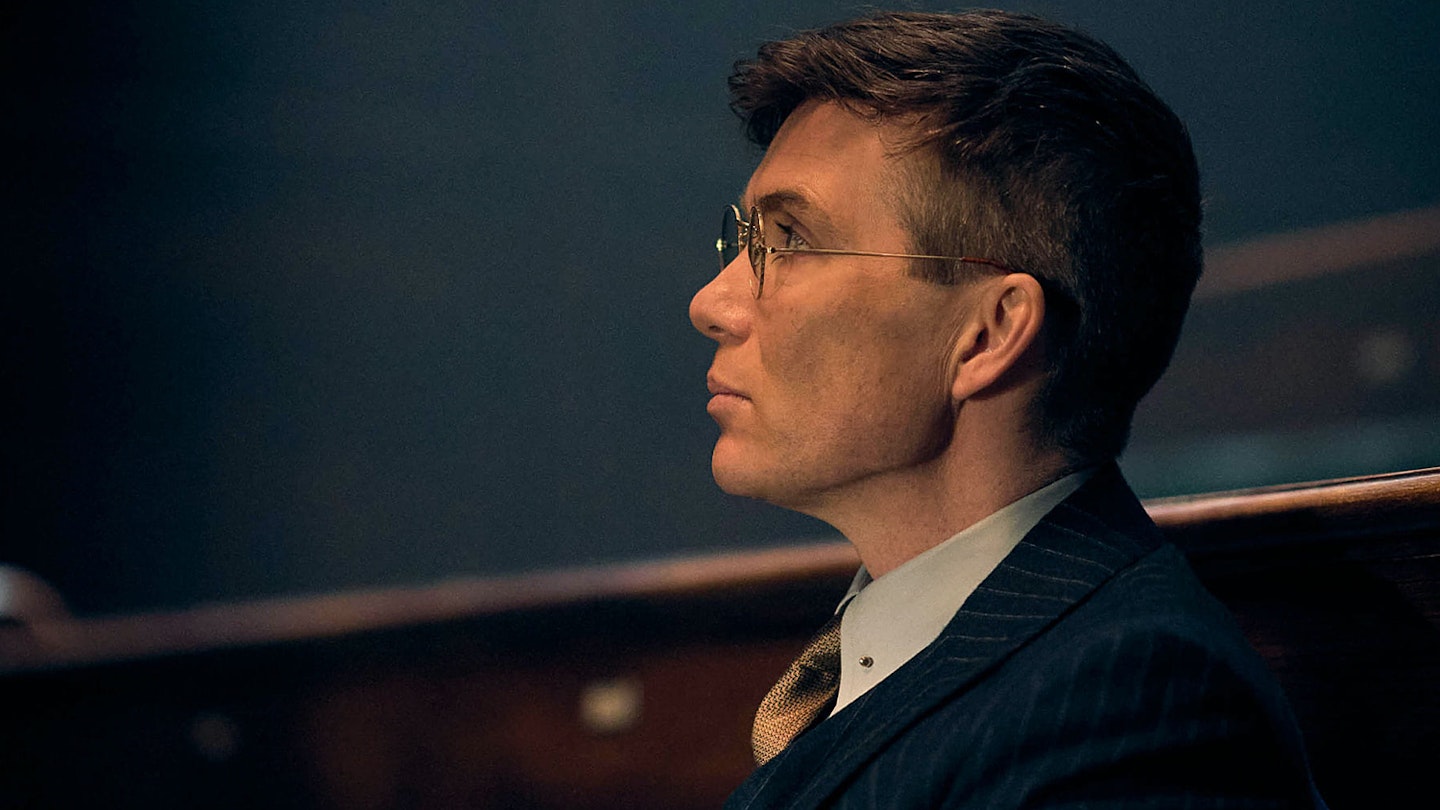Contains spoilers for the Peaky Blinders finale...
It was at about the time that Arthur Shelby strapped on a gas mask and strode through a bank of sickly green fog in the series finale of Steven Knight’s Brummie gangster saga that it felt like Peaky Blinders had got its groove back. Simultaneously stylish, threatening, unexpected, and completely unbothered by collateral damage (you have to imagine Birmingham City Council would take a dim view of whoever was responsible for mustard gas clouds drifting across town, Shelby or not) it was an intensely concentrated hit of that thing that makes Peaky Blinders, well, Peaky Blinders. It was peakPeaky.
It wasn’t the only moment in the show’s final ever episode that felt like that either. There was a completely improbable switcheroo which saw Charlie Strong David Blaine his way into Arthur’s place in the Garrison as the IRA swooped. How did they do it? Doesn’t matter. We had Johnny Dogs foiling Michael Gray’s car bomb plot. We had the reveal that Tommy wasn’t dying and that his doctor (and the other doctor he’d recommended) were doing the electric boogaloo with Hitler at the Mosleys’ wedding. Tom Hardy even dropped by to ask if Tommy was dying of the clap. This finale went big.
None of which is a criticism. Peaky Blinders is usually at its best when going for the most extreme version of itself. In Peaky logic, it kind of makes sense if its characters fake their own deaths or engineer some mad 4D chess resolution to a problem. They’ve always been half-myth anyway.

But for long tracts of this final series, it looked a little like Peaky Blinders might have lost its bottle. After the splenetic end to Series 5, it’s felt like the show had become a little coy about being too much itself. The parallels between Tommy’s long, slow death and Walter White’s last ride in Breaking Bad were clear enough. The problem was, a lot of stuff actually happened in the final season of Breaking Bad. Here, we seemed to spend a lot of time watching Tommy stare into the middle distance, hallucinate, or have Oswald Mosley, Diana Mitford and Jack Nelson round for tea.
The opium plot was what notionally made everything move, but aside from its two Stephen Graham scenes, it lacked much oomph. New characters dropped in to set up the next generation of Peaky Blinders – hello, Finn’s mute but apparently insufferable wife Mary – while hanging plot threads from Series 5 were swept under the carpet. (We must assume the Billy Boys died on their way back to their home planet.) In all, it often felt like a holding pattern – not the explosive culmination of a series which made a point of both being outrageous and making sure it got dirt and blood under its fingernails.
The final run delivered in spades when it was confident enough to play the greatest hits.
There might be a few reasons for that. The loss of Helen McCrory was, of course, a shattering blow. You can feel the sense of mourning throughout Series 6. Without McCrory’s anchoring presence, and with Arthur strung out and insensible most of the time, there wasn’t a great deal for Tommy to bounce off.
It was also hard to get away from the sense that the series was attempting to round off stories in half the time it might have had – a seventh run was announced and then abandoned in part because of Covid – and with one eye on setting up that long-awaited Peaky Blinders film and a follow-up spin-off series. Michael, apparently the big threat to Tommy’s life and business, was in prison for four and a half episodes, and then lasted about 20 minutes once he actually got out of there before being shot in the face. Jack Nelson, the other new enemy, was a bit of a damp squib up to the point that he garroted Billy Grade’s testicles – and then he just disappeared.
And yet, when it came to the crunch, the final run of Peaky Blinders delivered in spades when it was confident enough to play the greatest hits. Arthur went on the rampage. The Shelby gang’s outlandish rug-pulls came off seamlessly. Tommy schemed his way out of a trap set by his enemies. The body count was through the roof. We even got one last, “By order of the Peaky fucking Blinders,” spat at Finn Shelby by Tommy’s newfound son Duke.
By the time Tommy went full Dirty Harry, holding a gun to the head of his Nazi doctor, the decks had been cleared. He, and the show, had a sense of conviction back. Yes, it felt a bit wobbly to chuck a hallucination of Tommy’s dead daughter Ruby into the mix to stop him killing himself. Yes, a bunch of subplots you were waiting for answers to were likely chucked into the foundry furnaces. But it barrelled along with exactly the unique energy and vim that defines the show. Whatever happens next, Peaky Blinders went out in a blaze of glory.
READ MORE: The 20 Best Peaky Blinders Moments
